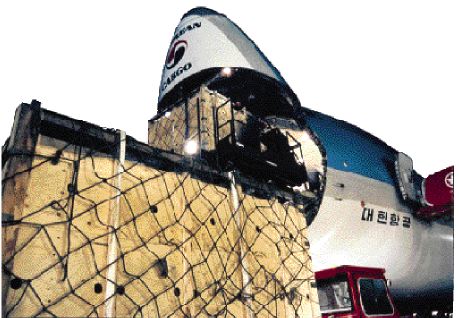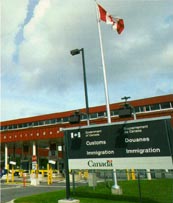The West
by JoAnn Napier
Businesses are finding that Western Canada is more than
just a pretty place -- the cost of doing business here is mighty attractive, too.
Quality of labor, competitive operating costs, a strong business climate: Those common factors pack a regional power punch for the economy of "the West" -- Canada's four western provinces.
Those four have undergone massive transformation -- from suppliers of basic resources to technically advanced suppliers of goods and services. From British Columbia on the Pacific Coast, through Alberta and Saskatchewan to Manitoba, the West -- as Canadians call the region -- is characterized by a rapidly growing, diversified economic base that's among the best in the industrialized world. What's more, that base is supported by one of the world's most educated and productive work forces.
British Columbia:
Right Time, Right Place
Consider this: British Columbia's (BC) population of 3.8 million is projected to increase by 39 percent by 2021.
Export, service-producing and high-tech industries are booming here, as BC's large economic base continues to expand, diversify and benefit from trade activity with the U.S. and Pacific Rim nations. That's not surprising: The province is a natural business draw, featuring a wonderful climate, a strong economy and a high quality of life. BC firms enjoy a lower total tax burden than their U.S. counterparts; relocating BC-based shipping companies receive tax concessions, and qualifying businesses that relocate receive a 100 percent provincial tax refund.
|
Picturesque Vancouver (pop. 1.7 million) continues to boom. This city -- which has international finance and trade center status -- is a landlord's dream, with the country's lowest office vacancy rate and the highest level of new office construction. New space of 448,000 sq. ft. (40,320 sq. m.) is scheduled for completion in 1997 -- all of it in surrounding municipalities of Richmond, Surrey, Delta and Langley.
|
| Courtesy of Winnport Logistics Ltd |
 |
| .An international air cargo and distribution hub, Winnipeg is home to the Winnport consortium, which has set an aggressive 1997 air service agenda, based on transporting from Asia to Winnipeg, and then trucking goods to the USA. |
|
Hughes Aircraft of Canada Ltd. set up its systems division operation and corporate headquarters in neighboring Richmond. President John Belcher praises the location's "ready access to the Pacific Rim marketplace and the city of Vancouver, recognized worldwide as a cosmopolitan city, [and] a multicultural resource pool for talented high technology professionals."
Industrial land prices in BC's surrounding communities are as much as 30 percent cheaper than the average price in the Greater Vancouver area. The city of Surrey, a major benefactor of Vancouver's industrial overflow, offers a deep-sea port, strong road and rail connections and speedy access to Vancouver's newly overhauled international airport. When a group of Taiwanese and Chinese investors went shopping for a site for their US$73 million Asian Center, they picked Surrey.
"It's the fastest-growing city in Canada for the next five to 10 years," said Canada-Asian Center Developments representative Albert Tseng. "Vancouver is simply not affordable. And people are moving out -- to Surrey, Langley. Surrey, for us, is the right place at the right time."
The Pacific Rim investment group, Tseng says, will apply in spring 1997 for a permit to build the shopping and cultural complex, which will include a giant supermarket, restaurants, hotel and domed exhibition center.
Alberta: An Industrial
Boom in Progress
"Alberta will become the center of gravity in Canada. I think there's a shift to the West. Canada will lead the G-7 nations in growth, Alberta will lead Canada, and Calgary will lead Alberta."
That's how Royal Bank chief economist John McCallum sized up Albert's prospects in January 1997.
And there's good reason to bank on this province of 2.7 million, nestled between British Columbia and Saskatchewan.
| Courtesy of Island Transparency Service |
 |
| Vancouver's international guests are graciously hosted in The Pan Pacific Hotel, near major developments like GM Place, Library Square and the Ford Center for the Performing Arts, where construction expansion is enhancing the downtown core's cultural influences. |
|
Alberta has no payroll or general capital taxes, no provincial sales tax and a combined federal/provincial personal income tax rate that's Canada's lowest. (Large corporations are taxed at 15.5 percent.) Alberta expects a 1996-97 budget surplus of $1.2 billion to $1.5 billion, and every major component of Alberta's economy is thriving -- energy, agriculture and forest.
But it's the oil and gas industry that's driving the engine, accounting for one-fifth of the province's GDP, with oil production expected to triple over the next quarter decade and new laws inked to spark start-up operations.
|
The cities of Calgary and Edmonton -- home to 80 percent of the province's population and their own professional football and hockey league teams -- stand to gain substantially from the billions of dollars of planned resource development.
In spirited, cultural Calgary (pop. 932,000), Canada's second-largest headquarters city after Toronto, commercial realtors are talking of new high-rise construction in the downtown core. Two new hotels have been announced, and the streets are abuzz with talk of a third. A Royal LePage survey shows a dip in Calgary's office vacancy rate to 9.7 percent from 1995's 14 percent, prompting talk of the first major downtown office tower in six years.
"Calgary is not the center of the universe," Royal LePage reports in its 1997 outlook. "It only seems that way when you analyze the large distribution companies that have congregated [in Calgary]." For example, after Canadian Pacific transplanted its head office from Montreal, Westjet and Greyhound chose Calgary to base their discount airlines in 1996, attracted by low taxes and operating costs.
In Alberta's capital city of Edmonton, (pop. 900,000) industrial leasing and sales absorption surpassed 1996's 1.6 million sq. ft. (144,000 sq. m.), doubling 1995 activity. That rapid industrial growth is forecast to continue through 1997, driven by demand from oil and gas business as well as distribution, manufacturing and software companies. Between April and September of 1996, industrial land sales in Edmonton totaled $14.6 million, versus $2 million for the same period in 1995.
Perched in the geographic heart of Canada's four western provinces, the city is a natural rail, road and air transportation hub for the region. Work on a $7.3 billion superhighway from the Alberta capital to Grand Prairie, 465 km. (275 miles) northwest of Edmonton, is scheduled for early 1997. And the $387 million Express Pipeline will open Wyoming and the U.S. Midwest to the region's oil producers in April 1997.
Saskatchewan:
Oasis on the Prairies
Saskatchewan (pop. 1 million) is known internationally for its production of high-quality grains and other agricultural products. But it's hard to stay "down on the farm" when you're a world leader in agricultural research, innovative dry-land farming techniques and fiber-optic technology implementation.
|
Innovation Place -- a research park adjacent to the University of Saskatchewan in the city of Saskatoon (pop. 221,000 ) -- has become a nucleus for agricultural biotechnology. The park has also spawned indigenous biotech firms and attracted research and commercialization arms of major international players like Pioneer HiBred International Inc., Monsanto, Hoechst Schering AgrEvo and French seed giant Group Limagrain. By the year 2000, that pool of companies is expected to generate annual sales of $146 million.
"Just a few years ago, some of the major players in the industry were wondering if this was the place to be," says John Steward, dean of agriculture at the University of Saskatchewan. "Now that they're here, they're telling us, 'It's the best thing we ever did.' "
|
 |
| British Columbia's excellent U.S. access includes this border crossing at Abbotsford. |
|
The province has a solid economic backbone that makes it an appealing prospect: low business, transportation and living costs, and solid road, rail and air infrastructure in major cities.
Cargill Ltd., the largest private company in the U.S. with 50 lines of business, chose the global nook of Clavet, about 14 miles (24 km.) east of Saskatoon, as the site for its new $39.1 million canola-crushing facility.
|
Alberta's Hardy Manufacturing Muscle
Western Canada's Alberta is flexing impressive manufacturing muscle, a recent study underscores. In fact, manufacturing is "one of the fastest employment growth sectors in Alberta, and accounts for 40 percent of all new jobs created in the last 12 months," says a Coopers & Lybrand Consulting (CLL) report released in September 1996. Moreover, Alberta's manufacturing base has tripled since 1970.
During 1988-1995, Alberta recorded the sharpest increase in manufacturing shipments among Western Canadian provinces, growing at a rate of 50 percent, CLL found. 1995 provincial manufacturing shipments of US$26.9 billion included "significant increases" in electrical and electronic products and machinery industries. In fact, CLL labeled both sectors as "up and comers" in Alberta's manufacturing ranks.
Industrial products remain the core of Alberta's manufacturing muscle: They accounted for 31 percent of the province's total 1995 manufacturing shipments and 43 percent of manufacturing value added.
There's also a substantial export slant in Alberta's manufacturing sector, the CLL study found: 1995 manufacturing exports of $10.5 billion made up almost 40 percent of the province's total merchandise exports -- only slightly less than the combined total for mining, oil and gas.
"The Alberta Advantage" is how local boosters tout the province's location appeal. A number of major firms apparently agree, with Alberta's business community including such notables as CP Rail, Daishowa, Hughes Aircraft, Iowa Beef Processors, Nortel, Pratt & Whitney, Rohne-Poulenc, Rubbermaid, and Shell.
|
|
Japan-based electrical and electronic products manufacturing heavyweight Hitachi Industries chose Saskatoon as the site for its first heavy industrial plant constructed on foreign soil. And Hitachi continues its local growth: It plans a $2.2 million expansion, and will add high-tech machinery to its existing Saskatchewan production facility.
Can-Oat Inc.'s story is similar. It invested about $29 million in 1990 in a plant in Portage La Prairie, Manitoba. Unable to meet exploding demand, the company now plans a second facility -- this time in Martinsville, a hamlet just north of Saskatoon. Says Can-Oat CEO Mike Masche, "The big draw for us is that we're in the heart of the oat belt with the kind of rail connections we need -- directly south."
Saskatchewan's business expansion is encouraged by the removal of provincial sales taxes on direct agents used in manufacturing and process. For small business, the corporate income tax rate has been reduced to 8 percent; there's a non-refundable 9 percent tax credit of investment for plant and equipment acquisitions for first-time processing or manufacturing activities; and businesses face no provincial payroll taxes or health-care premiums.
Many other corporations have taken root in Saskatchewan. For example, CIBC, Canada's second-largest financial institution, chose the city of Regina (pop. 198,000) as one of its two national banking centers. The province, which removed its sales tax on toll-free phone services, is now home to dozens of call centers.
And industrial land in Saskatchewan cities is a bargain. In Regina, for instance, serviced industrial land goes for $36,500 to $69,000 per acre. Housing starts are booming in Saskatchewan's major cities. A CMHC (Canadian Mortgage and Housing Commission) market analysis puts the average new executive home in Regina or Saskatoon at $109,000 to $124,000.
|
"People don't make that size of investment unless they are fairly confident about the future."
Centralized Manitoba:
An Ace in the Cold
Manitoba, (pop. 1.1 million) stands at North America's geographic center.
The province straddles the north-south axis of a major trade route, the mid-continent trade corridor, running from Manitoba's northern ocean port of Churchill through the U.S. Midwest to Mexico.
Naturally, Manitoba promotes itself as a transportation and distribution hub -- and it delivers, with virtually tariff-free access to U.S. and Mexican markets under the North American Free Trade Agreement (NAFTA) and the Canada-U.S. Free Trade Agreement. In fact, Manitoba regularly registers Canada's best export growth rate -- 85 percent since 1991.
With some of North America's most advanced telecommunication technology and the lowest long-distant rates, business is ringing -- and Manitoba is answering the call. The province's competitive telecommunications environment, Central Time Zone location and multilingual work force are pushing it out front as a call-center site of choice.
In the capital city of Winnipeg (pop. 680,000) the recently opened CN Customer Support Center is a state-of-the art technology showcase dealing an industry ace for Manitoba Telephone System (MTS).
 |
| "An oasis on the prairies" is how some describe Saskatchewan, home of high-quality agricultural products. But the city of 1 million is also a world leader in agricultural research and fiber-optic technology implementation. |
MTS President and CEO Bill Graser says discussions with IBM are under way to set up Manitoba research facilities "that again would put us at the leading edge of intellectual properties for call centers."
Winnipeg sits just north of the Canada-U.S. border and serves as eight major Canadian trucking firms' headquarters. A city-based consortium of major Canadian businesses is aggressively promoting the city as an international air cargo transportation and distribution center, a bid assisted by Purolator's recent decision to build a $3.2 million package-handling facility at Winnipeg Airport.
The provincial government is also working in partnership with a number of key U.S. states on establishing a trade corridor which would optimize freight costs, integrate rail, truck and water transportation systems (including the Mississippi barge system) and establish "Superports" on designated transportation/trade routes to expedite cross-border movement.
Winnipeg is also is the lowest-cost big city in Canada, offering residents a high-quality lifestyle, with all the amenities of larger urban centers -- and without the safety concerns of pollution. The average Winnipeg starter home sells for about $58,400. Surrounding communities stand to benefit from the upgrading of Highway 75 -- the province's major auto-route to U.S. northern states.
Manufacturing continues to be a one of Mantiboa's major economic motors: The province has Canada's second-lowest average manufacturing wages; utility and land costs are low; and Mantiboa's first-half 1996 manufacturing shipments increased 8.8 percent -- totally outstripping Canada's overall 1.9 percent hike in shipments.
-- JoAnn Napier is a freelance journalist and film producer
based in Halifax.

Wired for Business
Canada's Competitive Cost Advantage
Atlantic Canada
Quebec
Ontario
The West

A Site Selection Special Feature



